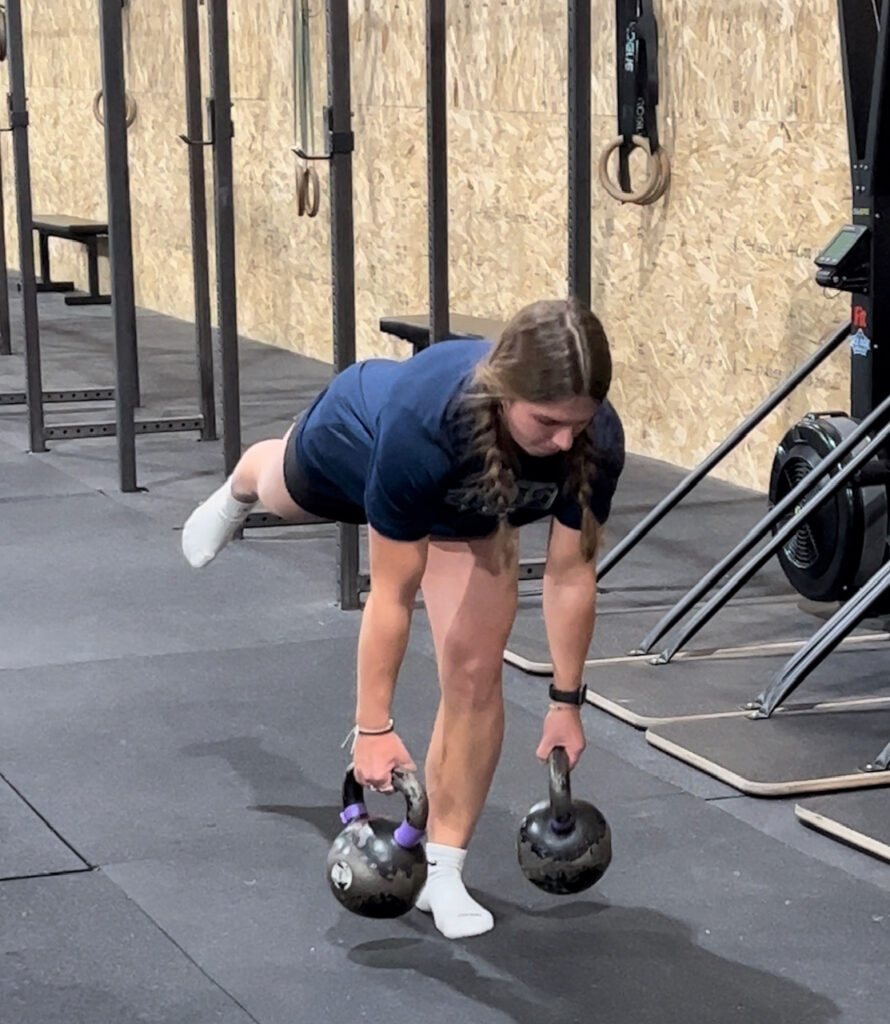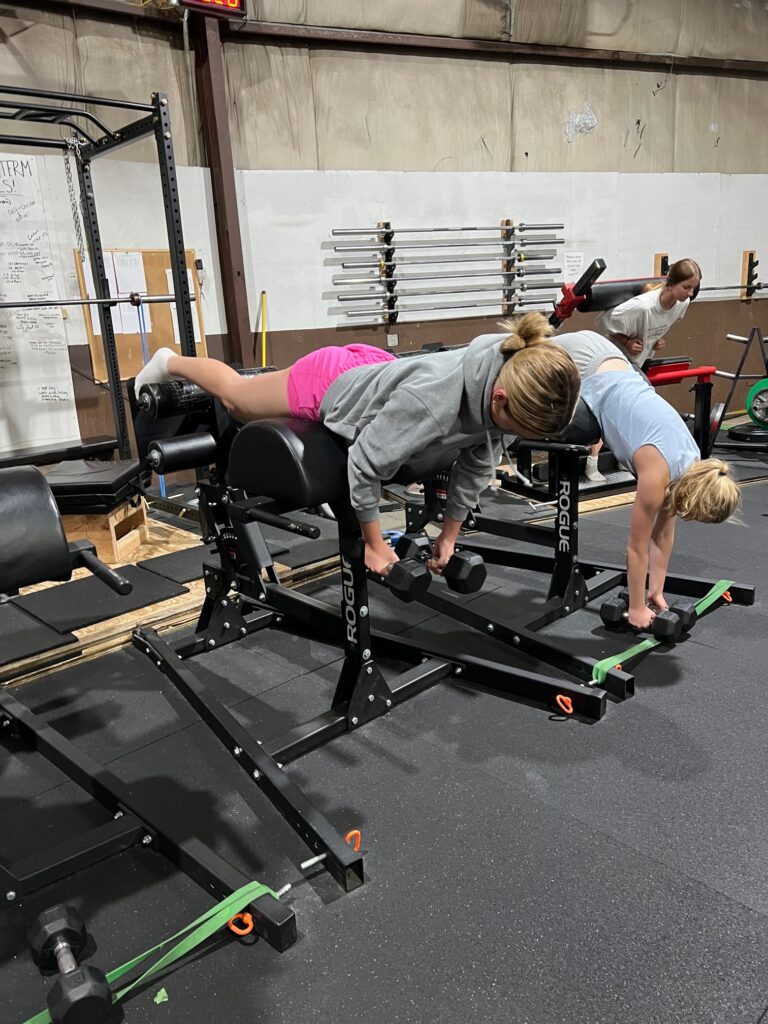ACL and knee health. OC Sports Performance has vast experience developing hamstring strength to prevent these injuries.
By Sean Wells

ACL Tears
At OC Sports Performance we utilize many methods to help prevent ACL injuries and promote knee health. The anterior cruciate ligament(ACL) is important for the knee when discussing integrity and stability. The ACL connects the thigh bone(Femur) to the shin (tibia). The connection between these two bones is at an angle. ACL tears are usually caused by the extension(locking the knee out) or hyperextension of the knee joint then a ton of force is applied. The anterior cruciate ligament then tears.
Who is susceptible?
The ACL tear is the most common injury for female soccer players. High school aged athletes (13-18 years), there is approximately 1.6-fold greater rate of ACL tears in females. Multisport female athletes are estimated to have a nearly 10% risk of incurring an ACL injury during her high school or secondary school career.
All female athletes seem to be a greater risk than males. However, males aren’t immune to this as this specific injury accounts for 2% of all NFL injuries. College football also has this specific knee issue as well, this study shows a 16% chance of a 4 year college football player suffering the injury.
The data shows us that this is a big issue in both males and females.

What doesn’t work
A lot of the work has been focusing on who is susceptible to these knee injuries and “screening” to help identify athletes who are at more risk. These screening tests, in my experience, seem to be wishful thinking and not truly effective.
The tests are hoping to objectively decide who is at more risk than others by “testing” athletes for over a 5-10 minute period of time. This just doesn’t allow enough time for the evaluator to determine if someone is susceptible. Also we are depending on an evaluator that doesn’t day in and day out see healthy athletes.
Quad Training
There is a group of people that believe training the quadriceps will help prevent ACL injuries. In my experience, loading and training the quad doesn’t lend itself well to preventing knee injuries. Even though the quadriceps are antagonists to the hamstring and gluteal muscles, which do more of the heavy work in running and walking. Antagonists are muscles that oppose each other during a movement—in effect balancing the function of the joint.
The best “semi” quad training is jumping and landing. At OC Sports Performance we perform jumps and weighted jumps multiple times a week and this lends itself to superior quad development. More information below in the jumping and landing segment.
Preface to what works
The preface to “what works” is that no matter what, playing a contact sport(football, soccer, basketball etc) there will be injuries. A strong athlete is going to have less risk and less injuries. An athlete in a big enough collision or a freak circumstance the ACL still might be torn. The fact is that the ACL can tear with about 40-50% of the force created when running if applied correctly.
In our program we are trying to prevent non contact ACL injuries. We have been coaching athletes including 100’s of female athletes and have very low rates of ACL tears – and even lower rates for non contact acl injuries.
What works
In our program we program a ton of Inverse Leg Curls, Russian Leg curls, and Strict GH Raises. In similar fashion these are all related. They all work the hamstring and the calf. These would be considered our “main” hamstring exercises. Typically, for these “main” exercises we complete 3-6 sets of 3-6 reps.
Inverse Leg Curl – Athlete demo
Strict GH Raise (PIC)

The hamstring crosses the knee joint, as well as the Gastroc tying in above the knee joint. These exercises listed above effectively train both the calf and the hamstring around the knee joint. The calf works as a secondary knee flexor and when trained with the hamstring it effectively lowers the risk towards the ACL. The reason is both the calf and the hamstring can maximally contract when trained together. All of the above exercises utilize the hamstring and calf muscles together which is key.
Additional Hamstring Work

The additional hamstring we complete for strengthening the hamstring tendon behind the knee are lots of variations of banded hamstring curls, standing hamstring curls and static hamstring holds.
These are supplemental exercises that are utilized in addition to the “main” hamstring exercises. The banded work is completed for 2-4 sets of 20-100 repetitions per set. In our OC Sports Program we have seen great results completing 100-300 banded leg curls a week.
Here are a couple of variations that we utilize:
Seated Hamstring Curls (Demo)
Face down hamstring curls (Demo)
Good Morning Machine


Jumping and Landing

In the OC Sports Performance program we jump 2-3x a week. Typically, these jumps are done on a vertical jump mat with dumbbells or with weights onto boxes weighted. Jumping up with weight.
These jumping exercises work and build quads, hip extension needed for sprinting, but also reinforce good mechanics in landing. The repeated exposure to jumping and landing has a positive effect for the athlete to prevent knee injuries.
Calf work
Direct calf work can help develop the calf muscles to support the knee. While we have found that training the calf and the hamstring together is a superior method to prevent knee injuries, direct calf work has a place in the training program.

We like to do seated calf raises to train the soleus. These are primarily done with a tempo, we utilize the tempo 3 seconds down and 3 seconds up and each set goes for :45 to 1:00. Meaning we are doing anywhere from 6-10 reps total with this tempo.

Also we like to do three different variations of other calf training. One particular variation is using the leg press machine and doing slow and controlled reps with the toes out, toes in and toes neutral. With these reps it is easy to go heavier and these can be done either single legged or both together.
Additionally, we like to do standing calf raises with our heels dropping off the power rack. We do these both standing up and “bent” over. These are great to develop the calf muscles especially if the athlete needs to develop the calf muscles.
Finally, we will utilize the Westside Barbell ATP to do bent over calf raises – in the “donkey calf raises style.
Please remember calf training in prevention of knee injuries especially ACL should be implemented in a manner discussed above – where both the hamstring and calf muscles work in unison.
Sled work
Dragging a sled while walking is going to work the entire posterior chain(hamstrings, glutes and low back). Also because it is just walking this is a low impact activity that is easy to recover from and has no long term negative effects.
Walking with the sled is also working and reinforcing the low hamstring and calf muscles working together to build strength around the knee joint.
These sled sessions can be completed daily before upper or lower body sessions. We tend to drag sleds at least 2x a week.
The sled drags are completed with the sled strapped to the athletes waist with a belt, not around the shoulders.
While we have discussed not using quadracepis training to prevent knee injuries we do believe that dragging sled backwards with a slight “bent knee” position does help develop the quads while improving overall development of the lower leg.
Conclusion

In reality, no amount of exercise is going to prevent all ACL injuries. However, we have had great success limiting the number of injuries we see in the athletes we train. Start training your hamstrings and calves together and watch the progress you make!
Interested in getting started in our OC Sports Performance Program? Book a Free Consultation today!

